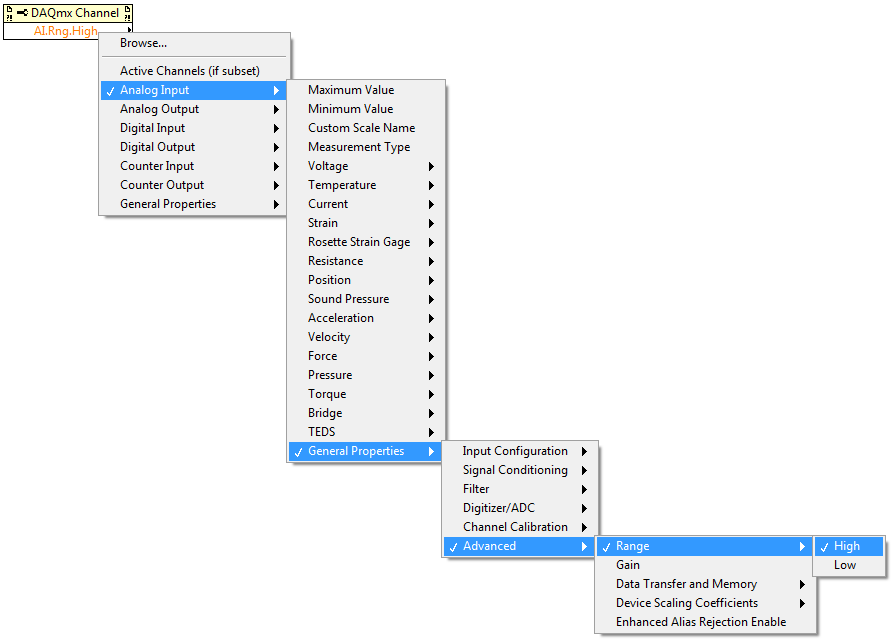You can configure your own device channel gain by two ways as follows.
- Setting it by Maximum/Minimum Value
There are also two ways by Max/Min Value:
- By DAQmx Create Channel VI, you can set it by Max/Min Terminal as Figure 1 shows.

- By selecting Maximum/Minimum Value Properties
Select
DAQmx Channel>>Analog Input>>Maximum/Minimum Value, like on Figure 2.

- Setting it by Range High/Low Properties
Select
DAQmx Channel>>Analog Input>>General>>Advanced>>Range>>High/Low, as shown on Figure 3 below.

The main difference between the two methods is the units to which they refer.
- The Max/Min value matches the appropriate units for the type of signal created by the DAQmx task. For example, Max/Min will refer to degrees of Celsius when doing an analog thermocouple input task, but it refers to amps for an analog current input task.
- When setting the range using high/low, the units are reflected in the DAQ device's native units. For example, the range for a DAQmx task using an E series device will be in volts.
Additional Information
You should avoid using both methods for the same task. If you set both Max/Min and High/Low, NI-DAQmx uses the last value to determine the channel gain.
When you select the Max and the Min value in the task, it doesn't mean that the ADC will work between those specific values. The task will use the values to automatically select one of the allowed ranges of your device's channel, there is a risk that if you use the wrong Max/Min values, your measures will be escalated and you won't have correct readings.